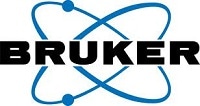Sulfonamide drugs have high and broad spectrum activity and are generally used to prevent and treat bacterial growth. However, honey samples often contain residues of these drugs and pose health hazards to consumers worldwide, as they tend to cause allergic and/or toxic reactions in hypersensitive humans and can potentially transfer drug-resistant bacteria from honey to humans.
Owing to the harmful effects of Sulfonamide drugs, many countries have set minimum required performance limits (MRPLs) for these antibiotics. To this end, the European Union has established an MRPL for Sulfonamide's at a level of 10µg/kg in honey.
A number of methods are available to determine and quantify these Sulfonamides. However, complex matrices pose poor sensitivity and selectivity and make the required MRPLs difficult to determine through these methods. On the contrary, the use of LC-MS/MS has demonstrated excellent selectivity and sensitivity to quantify the sulphonamides at the targeted MRPL levels in complex food matrices.
This article describes a simple, fast, sensitive and efficient method for concurrent determination of Sulfadimethoxin (SMM), Sulfadoxin (SDM), Sulfadiazin (SD), Sulfadimidine (SDN), Sulfamethazine (SM2), Sulfathiazole (ST), Sulfamerazine (SM1), Sulfamethizole (SMZ) and Sulfamethoxy-pyridazin (SMP) residues in honey using Bruker's Advance UHPLC system hyphenated with EVO. The method repeatability was analyzed on three different days by spiking blank honey matrix at 0.1 and 1 levels, and 10ppb of Sulfonamides.
Experimental Framework
Sigma-Aldrich’s LC-MS/MS grade Acetonitrile (ACN), Formic Acid and Water were procured, including the hydrochlorides of all nine Sulfonamides under study, i.e. SMM, SD, SDM, SM2, SDN, SM1, ST, SMP and SMZ.
For reagent preparation, triple distilled water was used. Then, stock solution of 1mg/mL of each standard was prepared in methanol and stored below 0oC. After this, a mixed standard solution which includes all nine Sulfonamides standards at 1000ng/mL concentration level was made by diluting separate stock solutions using dilutent (ACN: Water (20:80)). Then, the appropriate volume of the mixed standards solution was spiked in blank honey matrix to prepare the calibration solutions of 0.1ppb, 0.25ppb, 0.5ppb, 1ppb, 2.5ppb, 5ppb and 10ppb.
For sample preparation, 2.5g of honey was acidized with 2mL of 1% formic acid in water and vortexed for a period of 2 minutes. Then, 8mL of ACN was added to this mixture which was subjected to 10 minutes of ultrasonic extraction. After this, 1gm powder from BR73763 Kit was added to a polypropylene tube and shaken for 30 seconds. This mixture was then vortexed for a period of 15 minutes to obtain complete solubilization followed by centrifugation for 3 minutes at 3000rpm.
Then, the top 4mL of organic layer was transferred to a centrifuge tube and evaporated to dryness at 450C under Nitrogen. The extract was then filtered via a 0.22µm nylon filter into an HPLC vial and then injected.
Results
.jpg)
Figure 1. Chromatograms of all nine Sulfonamides studied at LOQ concentration level of 0.1ppb in honey with peak-to peak (PP) S.N ratio.
.jpg)
Figure 2. Overlaid chromatograms of all nine Sulfonamides at LOQ level and the honey matrix blank.
Figure 1 demonstrates chromatograms of all nine Sulfonamides examined at LOQ concentration level of 0.1ppb in honey with peak-to-peak (PP) S/N ratio. Furthermore, the S/N ratio for all nine Sulfonamides in honey matrix at 0.1ppb is above 10. In Figure 2, it can be seen that the blank honey matrix is extremely clean and does not include any of the targeted Sulfonamides.
In this experiment, European Union decision 2002/657/EC has been followed which denotes a number of parameters to validate the detection of the targeted compounds. Results acquired for all nine Sulfonamides at LOQ level concentration were within the satisfactory range of precision. The LOQ of 0.1ng/g obtained for all nine Sulfonamides were considerably lower than the MRLs specified by regulations in different countries. The table shown below indicates the MRM transitions obtained for each target analyte.
Table 1. MRM Transitions acquired.
| Compound |
RT |
Parent Ion |
Product Ion |
Collision Energy (V) |
| Sulfadiazin |
3.35 |
251.1 |
a156 |
20 |
| 251.1 |
108 |
12 |
| Sulfamethizole |
3.90 |
271.1 |
a156 |
5.04 |
| 271.1 |
92.1 |
20 |
| Sulfamerazine |
4.13 |
265.1 |
a172 |
24 |
| 265.1 |
92.1 |
12 |
| Sulfadimidine |
4.83 |
279.1 |
a156 |
22 |
| 279.1 |
124 |
16 |
| Sulfamethazine |
4.85 |
279.1 |
a186 |
16 |
| 279.1 |
124 |
26 |
| Sulfathiazoie |
5.00 |
256 |
a156 |
26 |
| 256 |
92.1 |
12 |
| Sulfamethoxypriadazin |
5.10 |
281.1 |
a156 |
14 |
| 281.1 |
188 |
14 |
| Sulfadoxin |
6.02 |
311 |
a156 |
16 |
| 311 |
108 |
28 |
| Sulfadimethoxin |
7.16 |
311.1 |
a156 |
18 |
| 311.1 |
108 |
28 |
a MRM transition used as Quantifi cation ion
Conclusion
Bruker’s Advance UHPLC combined with the EVOQ Elite Triple Quad LC-MS/MS system shows exceptional detection limits and repeatability for all nine Sulfonamides in the complex honey matrix. The Advance UHPLC was also able to reduce the total chromatographic run time, and results indicate that the technique can be adopted for screening and quantification of Sulfonamide drugs in honey as per the requirements of European Union. Key applications of this technology include food testing, toxicology testing, environmental analysis, and pharmacokinetics.

This information has been sourced, reviewed and adapted from materials provided by Bruker Life Sciences Mass Spectrometry.
For more information on this source, please visit Bruker Life Sciences Mass Spectrometry.